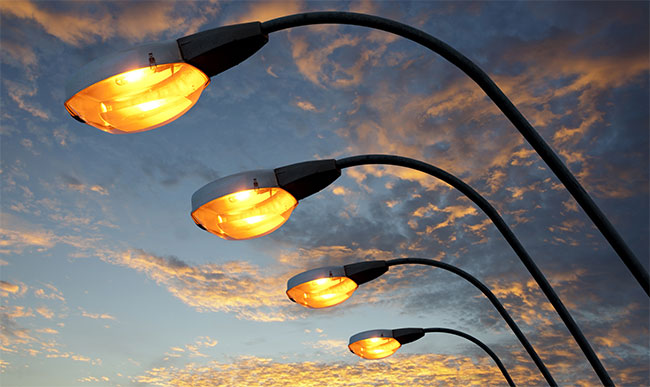A recent report from Research and Markets indicates that municipalities will be converting streetlights to LEDs due to efficiency reasons, just like many other lighting applications. So why are distributors choosing to take a pass on this ripe market?
The Market
In most countries outside of the United States, a goal of reduced greenhouse gas emissions and increased efficiency is driving the utility sector and even forcing foreign governments to take a deeper look at ways of reaching goals that require forward thinking.
The obvious place to start is with street lighting, where some places are only now moving towards compact fluorescent lamps and induction lamps. Throughout the world, many municipalities have sought to not just replace the latter (which are affected by temperature), but also mate them to the sensor technology that makes the Internet of Things and Smart Cities useful applications and not buzzwords.
Still, a number of distributors say that the current climate makes them reticent to try bidding on municipal projects. The reasons are as old as towns in the U.S. themselves.
The Issue: Education, or Enforced Ludditism
“It’s a very long process, and at the end of it they go with [the] low bid,” says Steve Spitzer of Monterey Lighting. “That’s fine for a manufacturer, if they can set the specification.”
The author of this article covered rural municipalities in New Jersey and witnessed township council meetings on major construction projects. As Spitzer noted, the principal concern of local officials was often the cost, and without consultants there during every discussion, the benefits versus costs were rarely weighed.
Chris Brown, former principal of Weidenbach-Brown, and current CEO of NextGen Lighting, says he did not even bid on municipal projects. Although his firm had experience with large-scale lighting projects, the numbers and process just didn’t make sense.
Steps Forward
Randy Young of BriteSwitch noted that the market is certainly there. “I’m constantly seeing stories and case studies about towns and municipalities [that] make a switch to LED street lighting and saving tons of energy.”
And a report provided to lightED by BriteSwitch indicates that the average prescriptive rebate for outdoor pole-arm mount luminaires is currently about $83 per unit. In 2018, the number of utilities offering rebates continues to climb, although it may be close to plateauing with a recent addition of nine new providers, bringing the total to 658. Still, compared to 189 four years ago, that’s significant.
What’s also significant is Young’s follow-up that the rebate analysis firm rarely does municipal work with distributors and other clients. So what changes in the current political climate could drive change?
There are a few. The story of Amazon’s HQ2 search is illuminating. The company is seeking a second site to its Seattle headquarters. Dozens of cities have provided proposals with incentives most often including tax breaks.
It may seem counter-intuitive, but that combined with the current administration’s focus on U.S. production of cars and other goods may actually provide an opportunity for distributors. Rather than focus on the cities placing a bet on the economic impact of bringing in manufacturing or major retailers, the surrounding towns may prove more fertile.
After all, they will be the ones who have not used up much of their tax base in the bids for these developments, which only reinforces the issues noted by Spitzer, Brown and others. However, they will be facing an infrastructure crunch and rising property values.
Otherwise, the status quo makes sense. “It’s difficult for a distributor to spend the time to educate [the customer] and then lose to a guy that is the lowest bid and has no time invested,” says Spitzer.
Tagged with lightED, street lighting